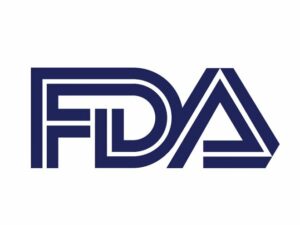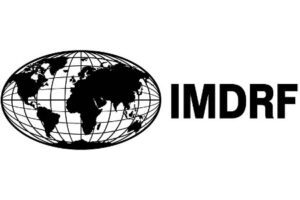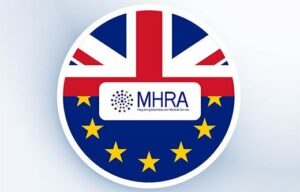The new article highlights the aspects related to the labeling for new assay-instrument combinations, and also to the way the information about them should be added to a public database.

Table of Contents
The Food and Drug Administration (FDA or the Agency), the US regulating authority in the sphere of healthcare products, has published a guidance document dedicated to the replacement reagent and instrument family policy for in vitro diagnostic (IVD) medical devices allowed to be marketed and used in the US. The document is intended to provide additional clarifications regarding the applicable regulatory requirements, as well as recommendations to be considered by medical device manufacturers in order to ensure compliance thereto. At the same time, provisions of the guidance are non-binding in their legal nature, nor are intended to introduce new rules or impose new obligations. Moreover, the authority explicitly states that an alternative approach could be applied, provided such an approach is in line with existing legislation and has been agreed with the authority in advance.
The policy described in the guidance addresses the situations when an assay is used for a different instrument family. The scope of the guidance covers, inter alia, the aspects related to labeling.
Labeling: Special Considerations
Under the general rule, labeling for IVDs must comply with 21 CFR parts 801 and 809 and any applicable device-specific requirements (e.g., special controls, restrictions, or limitations found in a clearance with limitations). As further explained by the authority, the documentation accompanying the product (namely – package inserts) should provide all the information about the procedural steps to be performed when using an assay with a new instrument. Such information is vitally important to ensure the safe and efficient use of a new assay-instrument combination. Sometimes the information about settings to be used for a new combination could be included in an application sheet – if this is the case, the references should be provided between the application sheet and the package insert to ensure clarity and completeness of the information provided. Apart from that, the authority also states that the package insert should provide precise information on specific instruments tested for use with the assay in question. Should various modifications of instruments be applicable, the appropriate information should be included as well. The FDA additionally emphasizes that the addition of a new combination of assay and instrument within the scope of this guidance should not significantly affect assay labeling, including performance claims.
Clinical Laboratory Improvement Amendments (CLIA) Categorization
Another important aspect addressed in the present guidance document issued by the FDA relates to the CLIA categorization which usually follows the clearance or approval (based on the particular framework the product in question is subject to). In order for the test system in question to be entered into the CLIA database, the manufacturer of an assay used in the system should submit the appropriate request to the authority. According to the guidance, such a request, when referencing to an assay intended to be used with a different instrument under the Replacement Reagent Policy or Instrument Family Policy should include:
- A signed cover page, with contact information, clearly designating the request “For CLIA Categorization Only”. The authority also recommends the applicants to include a statement that the manufacturer has followed the logic scheme and considered the issues in this guidance.
- Specifications of which instruments (cleared or family member) and cleared assays are being combined, including reference to all related assay and instrument 510(k) numbers. This information can be most clearly represented in table format, especially if multiple assays or instruments are involved.
- The package insert (and application sheet, if applicable) for the new test system specifying the additional instruments. Inclusion of the 510(k)-cleared package insert is also recommended to help streamline the categorization process.
The authority also mentions that in the case the particular instrument family member used for a new combination was neither included in the initial 510(k) application nor previously categorized, the applicant should also provide the Operator Manual or an expert from it covering such details as the name and intended use of an instrument in question details on its manufacturer and distributor, as well as any changes that took place.
It is also important to mention that in case the assay in question is manufactured by another manufacturer, and the assay is expected to be used with a new instrument family member, its manufacturer should also provide relevant confirmation to be issued by the manufacturers responsible for an instrument.
Once a CLIA request has been received, the authority will assign a number, notify the applicant and then notify the latter about categorization. According to the guidance, the expected timeframe for such an action is 30 calendar days from the date of request. Upon completion, the authority will also publish information in the CLIA database which is publicly accessible. The authority additionally emphasizes that categorization in response to a CLIA categorization request is not a substantial equivalence determination, and is not meant to indicate FDA review of the manufacturer’s internal assessments and testing. Thus, a product placed on the market under the present policy should not be used as a predicate device in the context of a new 510(k) submission.
In summary, the present FDA guidance outlines specific aspects to be considered with respect to labeling for new assay-instrument combinations in order to ensure all the important information is duly communicated to potential users. The document also describes the approach to be applied with respect to CLIA requests.
How Can RegDesk Help?
RegDesk is a holistic Regulatory Information Management System that provides medical device and pharma companies with regulatory intelligence for over 120 markets worldwide. It can help you prepare and publish global applications, manage standards, run change assessments, and obtain real-time alerts on regulatory changes through a centralized platform. Our clients also have access to our network of over 4000 compliance experts worldwide to obtain verification on critical questions. Global expansion has never been this simple.
Want to know more about our solutions? Speak to a RegDesk Expert today!
-->- SEO Powered Content & PR Distribution. Get Amplified Today.
- PlatoData.Network Vertical Generative Ai. Empower Yourself. Access Here.
- PlatoAiStream. Web3 Intelligence. Knowledge Amplified. Access Here.
- PlatoESG. Automotive / EVs, Carbon, CleanTech, Energy, Environment, Solar, Waste Management. Access Here.
- BlockOffsets. Modernizing Environmental Offset Ownership. Access Here.
- Source: https://www.regdesk.co/fda-on-reagent-replacement-policy-labeling-and-clia-requests/?utm_source=rss&utm_medium=rss&utm_campaign=fda-on-reagent-replacement-policy-labeling-and-clia-requests
- :has
- :is
- :not
- 1
- 30
- a
- About
- access
- accessible
- According
- Action
- added
- addition
- Additional
- Additionally
- addresses
- administration
- advance
- affect
- agency
- alerts
- All
- allowed
- also
- alternative
- amendments
- an
- and
- Another
- any
- apart
- applicable
- applicants
- Application
- applications
- applied
- approach
- appropriate
- approval
- ARE
- article
- AS
- aspect
- aspects
- assessments
- At
- authority
- based
- BE
- been
- being
- between
- by
- Calendar
- CAN
- case
- centralized
- change
- Changes
- claims
- clarity
- clearly
- clients
- combination
- combinations
- combined
- communicated
- Companies
- completion
- compliance
- comply
- confirmation
- considered
- contact
- context
- controls
- could
- cover
- covering
- covers
- critical
- Database
- Date
- Days
- dedicated
- described
- details
- determination
- device
- Devices
- different
- document
- documentation
- drug
- e
- efficient
- emphasizes
- ensure
- entered
- especially
- existing
- expansion
- expected
- expert
- experts
- explained
- family
- fda
- followed
- follows
- food
- Food and Drug Administration
- For
- format
- found
- Framework
- from
- further
- General
- Global
- global expansion
- guidance
- Have
- healthcare
- help
- highlights
- holistic
- HTTPS
- if
- important
- important aspect
- impose
- improvement
- in
- include
- included
- Including
- inclusion
- indicate
- information
- initial
- Inserts
- instrument
- instruments
- Intelligence
- intended
- internal
- into
- introduce
- involved
- Issued
- issues
- IT
- ITS
- Know
- labeling
- laboratory
- Legal
- Legislation
- limitations
- Line
- logic
- manage
- management
- management system
- manual
- manufactured
- Manufacturer
- Manufacturers
- Market
- Markets
- max-width
- meant
- medical
- medical device
- medical devices
- member
- mentions
- Modifications
- more
- Moreover
- most
- multiple
- must
- name
- namely
- Nature
- Neither
- network
- never
- New
- nor
- number
- numbers
- obligations
- obtain
- of
- on
- operator
- or
- order
- our
- outlines
- over
- package
- page
- particular
- parts
- performance
- performed
- Pharma
- Place
- platform
- plato
- Plato Data Intelligence
- PlatoData
- policy
- potential
- precise
- Prepare
- present
- previously
- process
- Product
- Products
- provide
- provided
- provides
- public
- publicly
- publish
- published
- question
- Questions
- real-time
- received
- recommendations
- recommended
- recommends
- references
- referencing
- regarding
- regulating
- regulatory
- related
- relevant
- replacement
- represented
- request
- requests
- Requirements
- respect
- response
- responsible
- restrictions
- review
- Rule
- rules
- Run
- safe
- same
- scheme
- scope
- settings
- sheet
- should
- signed
- significantly
- Simple
- situations
- Solutions
- Sources
- speak
- special
- specific
- standards
- Statement
- States
- Steps
- streamline
- subject
- submission
- submit
- substantial
- such
- SUMMARY
- system
- table
- test
- tested
- Testing
- that
- The
- the information
- their
- Them
- then
- this
- Through
- time
- timeframe
- Title
- to
- took
- under
- upon
- us
- use
- used
- users
- using
- usually
- various
- Verification
- want
- was
- Way..
- WELL
- when
- which
- will
- with
- within
- worldwide
- you
- zephyrnet













